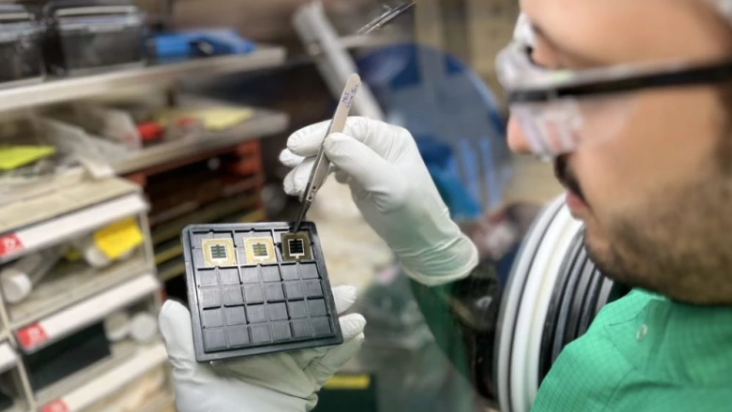Arab tandem solar cells achieve record efficiency: 33.2%

After less than half a year, another record has been broken. KAUST University in Saudi Arabia has succeeded in developing tandem solar cells combining silicon and perovskite with a record efficiency of 33.2%.
Late last year, tandem solar cells with a record 32.5% efficiency were unveiled. These were backed by Helmholtz Zentrum Berlin (HZB), but after less than half a year there is a new record. But first, let’s explain what tandem solar cells are. The conventional ones we encounter today are usually silicon ones, which convert mainly red and infrared spectrum light into electrical energy (especially from about 600-700 nm upwards). However, they more or less “ignore” the rest. This is, in contrast, the domain of new materials with perovskite structures, which, on the other hand, are not very good in the red part of the spectrum, but convert light with a wavelength somewhere between 400 and some 600-700 nm well. A tandem cell is one that has both a silicon layer and a perovskite layer at the same time. Simply put, the perovskite on top converts the blue and green parts of the spectrum into electrical energy and passes the red component to the silicon layer below, which takes care of the rest.
Scientists at King Abdullah University of Science and Technology (KAUST) in Saudi Arabia are not exactly new to pervoskite development. Now they have achieved the aforementioned combination and set a new record of 33.2%. This is a record for non-concentrated light. The efficiency has been verified both at the European Solar Test Installation (ESTI) and at the National Renewable Energy Laboratory (NREL), which is also one of the leading institutes developing perovskite solar cells and often presents record-breaking models.
Unfortunately, we do not have more information on these cells. We would certainly be very interested in their lifetime, which is still an issue with perovskite layers, and there are few versions that do not have significant problems with this. We should also note here that scientists at Signapur have recently managed to figure out how to remove the problematic lead from perovskites. The scientists at KAUST have let it be known that they are now developing a method to produce the 240+ cm2 cells presented above, but when we will be able to buy any products based on the results of this development is unknown.
Source, photo: interestingengineering.com
Author of this article
WAS THIS ARTICLE HELPFUL?
Support us to keep up the good work and to provide you even better content. Your donations will be used to help students get access to quality content for free and pay our contributors’ salaries, who work hard to create this website content! Thank you for all your support!




OR CONTINUE READING